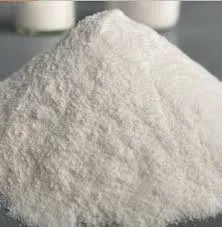
Pro . 29, 2024 18:33 Back to list
HPMC Applications in Pharmaceuticals and Food Industry for Enhanced Stability and Performance
Understanding HPMC Hydroxypropyl Methylcellulose
Hydroxypropyl Methylcellulose, commonly referred to as HPMC, is a versatile cellulose derivative that has gained popularity across various industries due to its unique properties and applications. Initially used in the pharmaceutical and food industries, HPMC has expanded its reach to cosmetics, construction, and even the textile sector. This article provides an overview of HPMC, its properties, applications, and significance.
What is HPMC?
HPMC is synthesized by the etherification of cellulose, a natural polymer derived from plant cell walls. Its structure includes hydroxypropyl and methyl groups, imparting specific characteristics that enhance its functionality. HPMC is a non-ionic, water-soluble polymer, which means it dissolves in cold water to form a gel-like substance. The degree of substitution, which refers to the number of hydroxyl groups replaced by hydroxypropyl and methyl groups, determines HPMC’s properties and its solubility in different temperature ranges.
Properties of HPMC
One of the most prominent features of HPMC is its viscosity. Depending on the concentration and molecular weight, HPMC can produce solutions of varying viscosities, making it suitable for different formulation needs. It also has excellent film-forming properties, which enable it to create transparent and flexible films. This capability is crucial for applications in the pharmaceutical industry, particularly in the production of tablets and coatings.
Moreover, HPMC is known for its biocompatibility and low toxicity, making it an attractive ingredient in various formulations. Its ability to retain moisture and provide a smooth texture further enhances its appeal in cosmetic products, where hydration and skin feel are of utmost importance.
Applications of HPMC
hpmc hydroxypropyl methylcellulose

1. Pharmaceuticals In the pharmaceutical industry, HPMC is widely used as a tablet binder and film former. It helps in controlling the release of active ingredients in extended-release formulations, enhancing the therapeutic efficacy of medicines. Additionally, HPMC is used in ocular preparations, providing viscosity and stability to eye drops.
2. Food Industry HPMC serves as a food additive under the E-number E464. It is employed as a thickening agent, emulsifier, and stabilizer in various food products. By improving texture and shelf-life, HPMC enhances the overall quality of processed foods, such as sauces, dressings, and baked goods.
3. Cosmetics In cosmetics, HPMC acts as a thickener, emulsifier, and film-forming agent. It is commonly found in lotions, creams, shampoos, and gels. Due to its ability to provide a smooth application and a non-greasy feel, HPMC is favored in many skincare formulations.
4. Construction HPMC is utilized in the construction industry as an additive in cement-based products. It enhances workability and water retention, making it easier to apply adhesives and mortars. Additionally, it helps in controlling the setting time of compounds, thus improving overall performance.
5. Textiles In textile applications, HPMC is used as a sizing agent and thickening agent for dyes and coatings, improving the quality of fabric finishes and prints.
Conclusion
Hydroxypropyl Methylcellulose is a multifunctional compound with a wide array of applications across various industries. Its unique properties, such as solubility, viscosity, and film-forming ability, make it an invaluable ingredient. As industries continue to evolve, the demand for HPMC is likely to grow, driven by trends toward natural and versatile ingredients in formulations. With its admirable safety profile and compatibility with other formulations, HPMC is set to remain a critical component in the development of innovative products for the future. Whether in pharmaceuticals, food, cosmetics, construction, or textiles, HPMC exemplifies the synergy between nature and technology, providing solutions that meet contemporary demands.
-
Unlocking the Benefits of HPMC Products: A Gateway to Versatile Applications
NewsAug.07,2025
-
Unleashing the Potential of HPMC Ashland: A Comprehensive Look
NewsAug.07,2025
-
Tile Bonding Cellulose: The Key to Superior Adhesion and Durability
NewsAug.07,2025
-
Hydroxypropyl Methylcellulose Powder: The Versatile Component in Modern Pharmaceuticals
NewsAug.07,2025
-
Hydroxyethyl Cellulose: The Versatile Solution for Various Industries
NewsAug.07,2025
-
Hydroxyethyl Cellulose (HEC): The Versatile Polymer for Various Applications
NewsAug.07,2025







